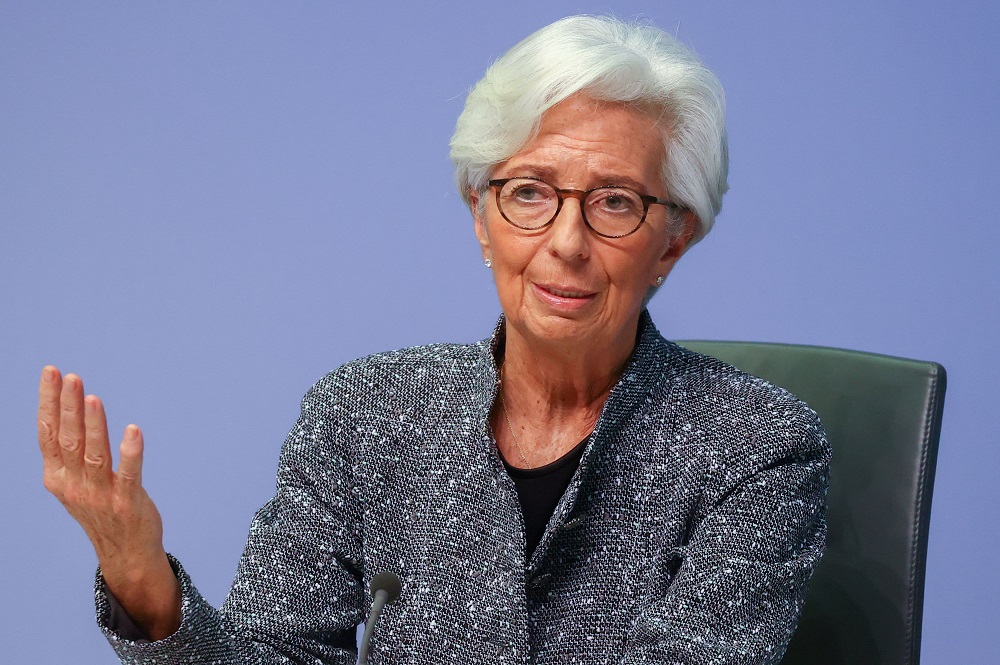What caused the ECB to hike rates?
Not for the first time the ECB has hiked rates into what is clearly a very difficult financial situation. In the prior two instances the ECB’s actions were later seen as somewhat foolhardy as the rate hikes had to be quickly reversed. Will it be a case of third time lucky today?

European Central Bank President Christine Lagarde
>> Will banking stress force the ECB and FED to suspend rate hikes?
The ECB’s primary mandate is to reduce inflation to the 2% target and its new forecasts still show that it will not achieve this over the three-year forecast horizon (inflation is put at 2.1% in 2025). In addition to this, the ECB “promised” a 50-bps hike for yesterday, so we should not be too surprised that this is what it delivered.
However, when the Bank made these forecasts and made these promises it was not facing the sort of financial strains that have developed in the past few days. Clearly many, including the ECB, would say that the bank should not be blown off course by these events. However, the Bank has arguably shown poor judgement in the past when financial tensions start brewing and there’s an argument that it is doing the same again right now.
The first of these was back in the summer of 2008. The ECB lifted policy rates in July 2008 at a time when financial strains were increasing significantly. US investment bank Bear Stearns had collapsed and a number of European banks, such as BNP were under pressure for their links to the stumbling US housing market.
Not just that, other major central banks like the Fed and BoE avoided similar actions to the ECB. The Fed, for instance, started cutting policy rates from September 2007 and the BoE from December 2007. Central banks, including the ECB, engaged in actions in 2007 and 2008 to bolster liquidity in the financial system including the Fed’s opening of swap lines with other central banks. And yet, despite all this, the ECB still went ahead with a rate hike in July 2008 because of its fears on inflation. It was a hike that the ECB was forced to more than reverse just three months later.
Fast-forward to 2011 and the ECB hiked rates twice, in April and July and this in spite of the fact that government bailouts had already begun over the euro zone debt crisis. Greece, for instance, received its second bailout in the very month that the ECB hiked rates for a second time – July 2011. What’s more, no other major central bank was hiking rates at the time; most were putting measures in place to ease liquidity conditions. The Fed, for instance, had announced an extra USD600bn of QE from November 2010 through June 2011. On this occasion it took a, slightly longer, four months for the ECB to reverse course and start cutting rates.
>> The risks of central banks in data dependency
So here we have two instances where the ECB’s judgement between inflation and financial stability was awry as it put too much focus on the former and not enough on the latter. Will the same happen again now? The context is different this time. For a start, inflation is much higher and banks are much better capitalised. In addition, the ECB has introduced a large number of tools since 2008 to cope with liquidity issues, debt crises and more. Many are still running; others can be pulled off the shelf, and new ones could be introduced.
Hence, at first blush it might seem that the Bank is perfectly justified in pushing ahead with aggressive rate hikes in spite of the financial implosion that seems to be going on all around. But we don’t see it this way.
Mr. Steve Barrow, Head of Standard Bank G10 Strategy thinks that the ECB could be falling into the same trap. The consequence of this is that, while the ECB’s sharp rate hike might be the bank’s way of bolstering its credibility with the market on inflation, it will more than likely weaken the euro, not strengthen it, and risks pushing bank strains into periphery euro zone bond markets to a much greater extent than we’ve seen already.








